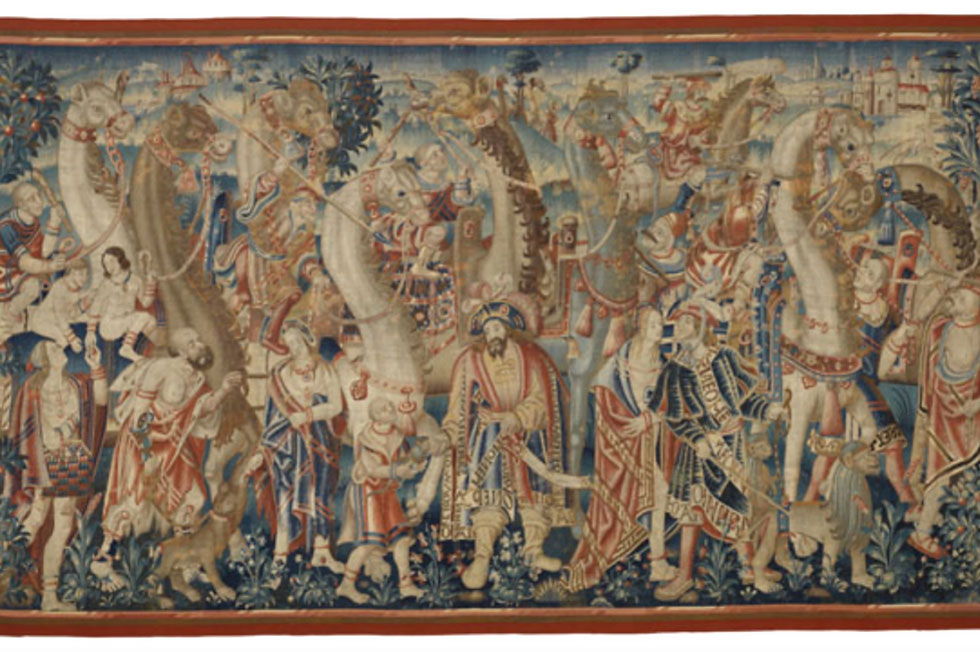
The refurbishment of The Burrell Collection gave Glasgow Life ‘the chance to rethink and reshape our galleries and displays in an innovative and dynamic way, and to start telling stories which were previously hidden.’
Included as one of thirty highlights from the collection of 9,000 objects donated to the city of Glasgow by Sir William Burrell in 1944, ‘The Camel Caravan’ is part of a set of tapestries that depicts the voyages of the Portuguese explorer, Vasco da Gama.
Despite being located at almost opposite ends of the UK, Glasgow Life appointed The Textile Conservancy to conserve the tapestry for display in one of the new galleries.
The tapestry depicts exploration of the Indies. The narrative is dominated by eight long-necked
camels while in the foreground, richly attired traders interact with scantily-clad indigenous
men and women. The scene is set in a rural landscape with buildings and fruit trees in the
background.
The tapestry is woven with wool and silk wefts and undyed wool warps; the outer border is of bands of lacquer red and golden yellow.
The conservation treatment required the tapestry to be repaired and prepared for long-term display. A full linen scrim was applied to the reverse to support conservation stitching; to secure the alignment and ease of the scrim, a grid of short zig-zag lines was worked across the tapestry.

As the tapestry measures approximately 6.5m x 3.6m, the conservation repairs were worked from the right side to the middle, then from the middle to the left side.

To complete the conservation repairs, as well as secure the linen scrim in a uniform grid, took a total of 1450 hours.

A unique aspect of the conservation treatment was to implement a method of display that would afford maximum support to the delicate open-weave structure – see image above. This inherent weakness needed to be addressed to avoid further deterioration occurring as a consequence of long-term display.
In consultation with the textile conservator at Glasgow Life, it was agreed that the tapestry would benefit being displayed on a sloped board. In reducing the angle of display, so the tapestry was not hanging vertically, the cumulative strain on the upper half of the tapestry would be significantly reduced.
The tapestry was fixed to the top of the fabric-covered slope boards using contact-fastening tape – Velcro.


In adopting this method of display it was recognized that the amount of conservation stitching to the lower third of the tapestry could be reduced and in addition, it would not require lining.
Although this method of display has been previously adopted for other textiles, this was possibly the first time that it has been employed for a tapestry, particularly one of this size.